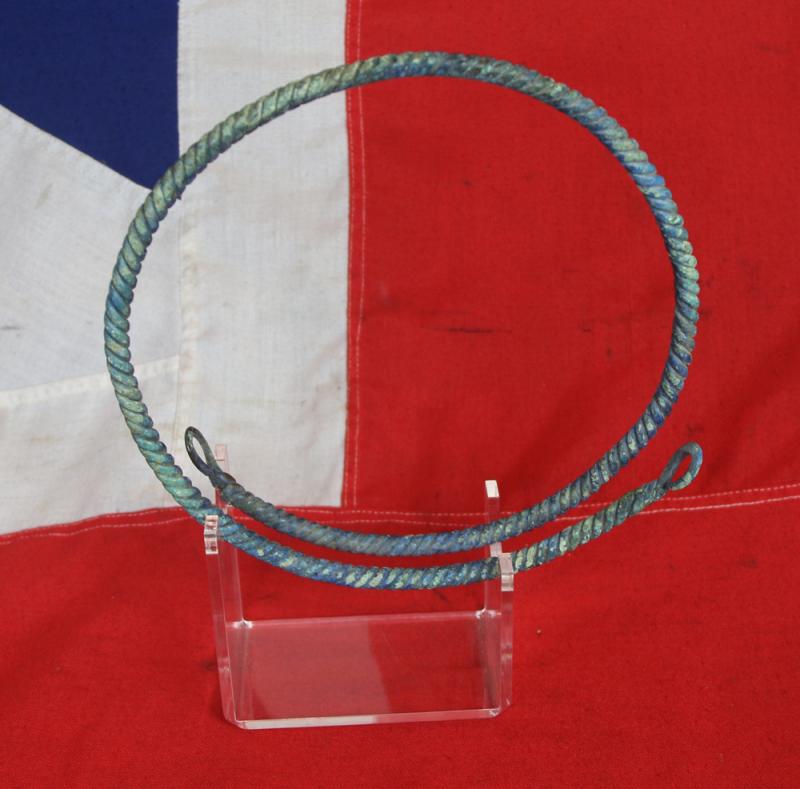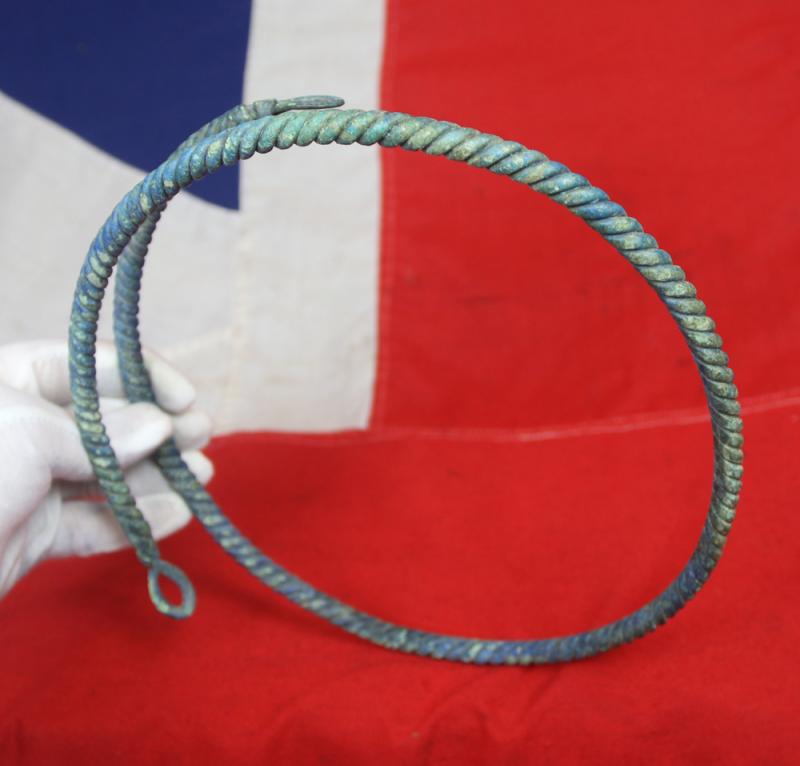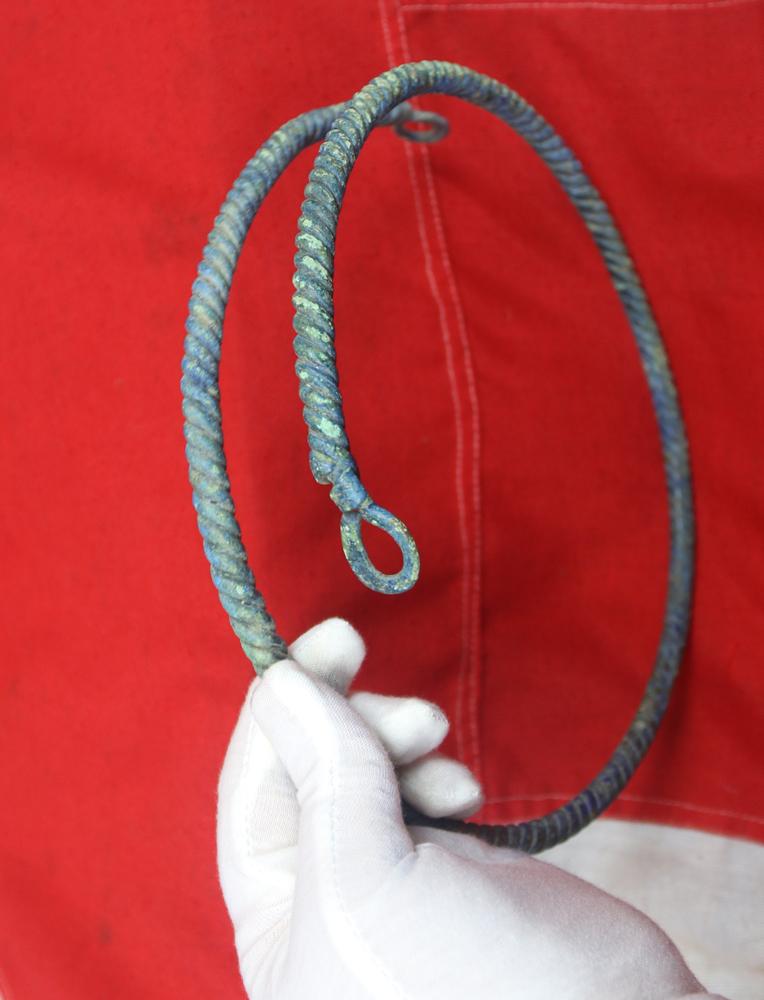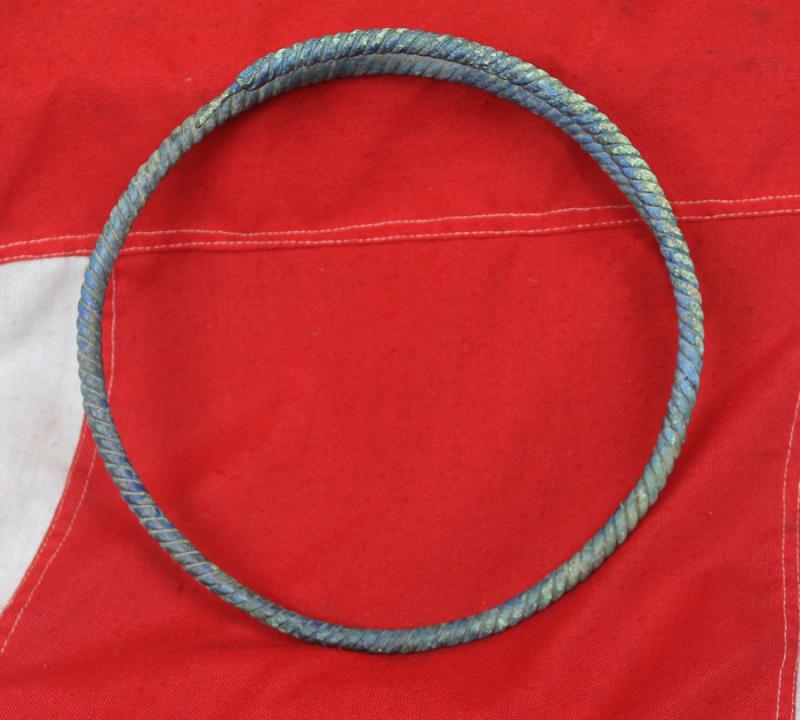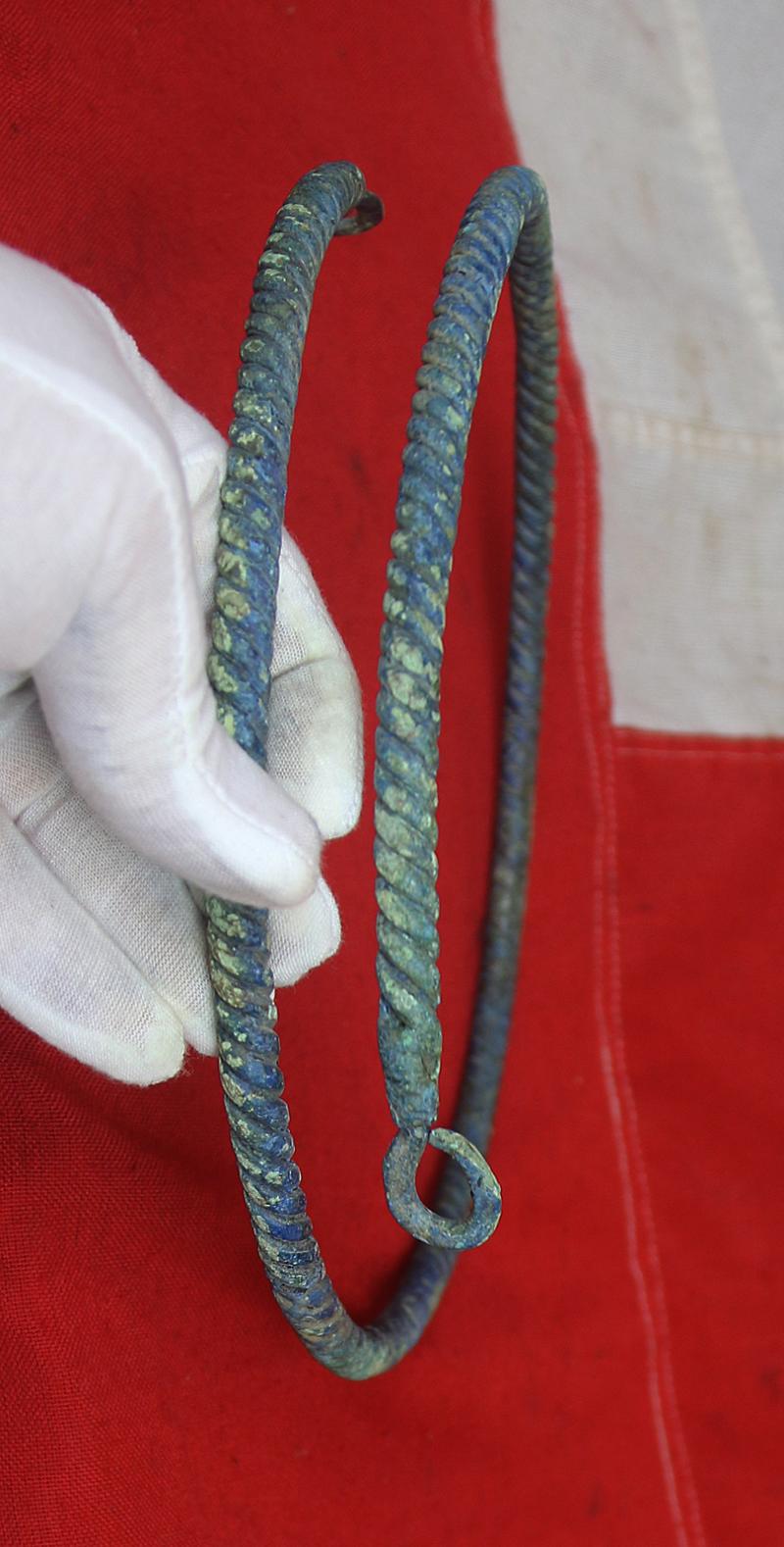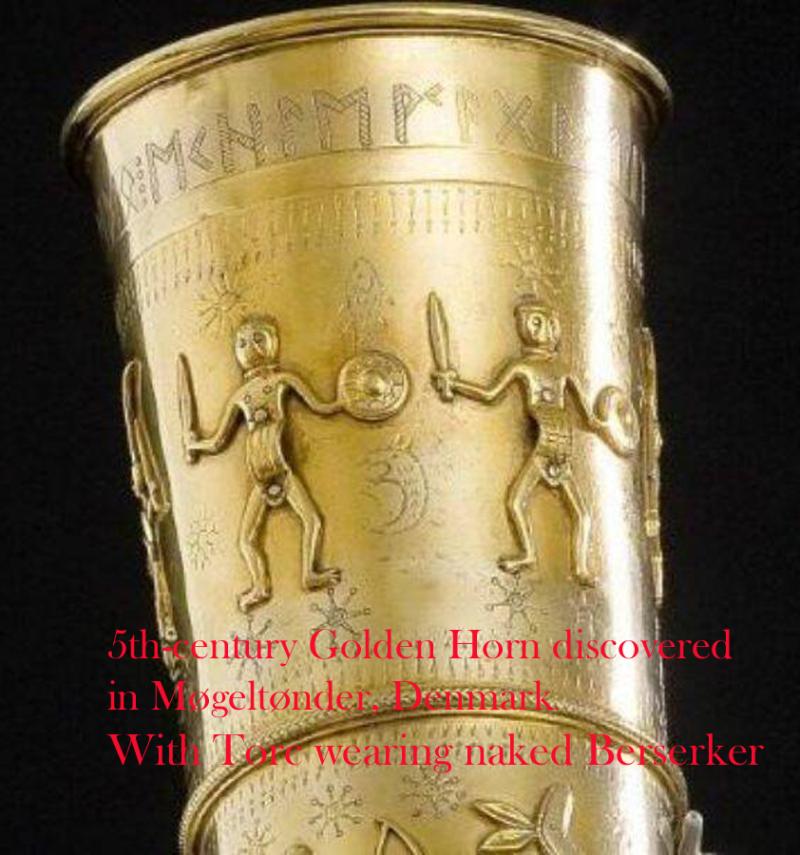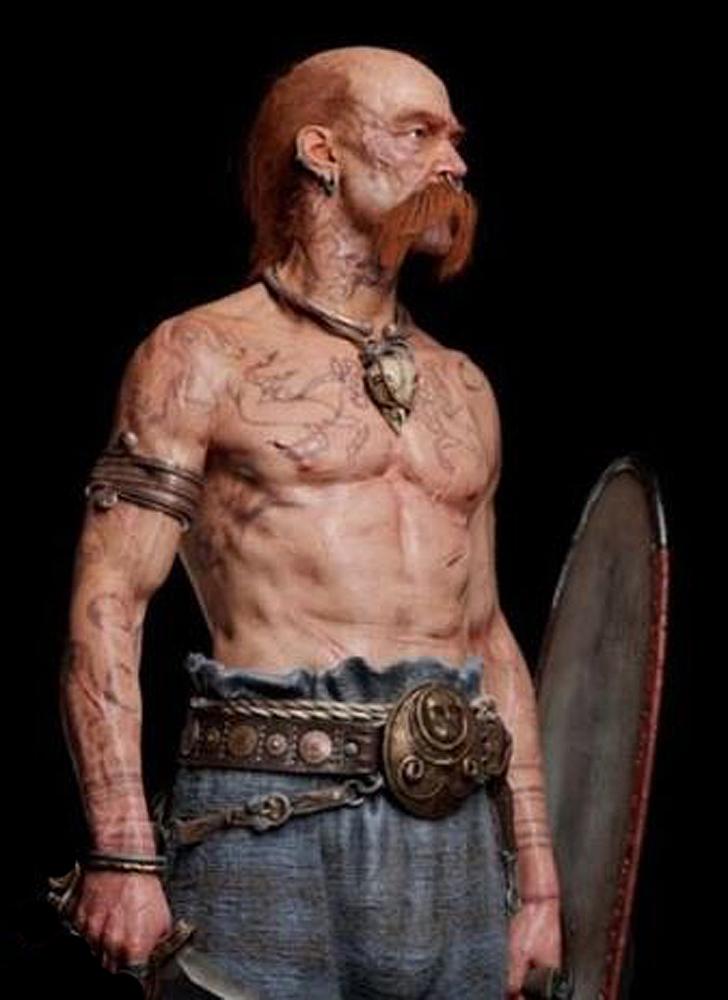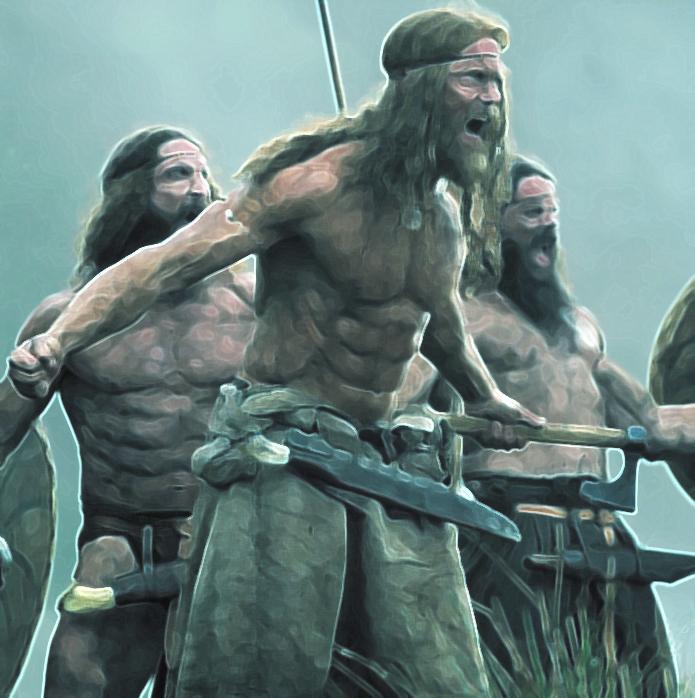SOLD; Originally Worn By A Legendary, Notorious & Terrifying 'Elite' Viking Mercenary Warrior, A Spectacular, Original & Ancient Viking 'Berserker's' Status Neck Torc in Bronze. Even the Fierce-Some Viking's Were in Fear Of Them. 1200 Years old
This fabulous piece is now sold and awaiting delivery to its new, very fortunate owner. If any former collector of original Viking warfare bronze adornments has similar pieces they may wish to sell, please consider contacting us, we are always incredibly keen to acquire additional rare Viking antiquities for our gallery’s collection. As the largest specialist dealers in Europe in military antiques and antiquities we are always keen to be contacted by current or former collectors.
A very large bronze Torc in traditional Viking twisted wirework, heavy grade copper bronze. Berserkers were among the most feared of the Norse Viking bare-skinned warriors of their age, ingesting hallucinogens to induce a trance-like fury that carried them through battle.
It is believed they fought hand to hand, naked, and bearing nothing but their weapons, a shield and wearing only their status neck torc
It’s around an amazing 24 cm across, weighing 460 grams
The Lewis Chessmen, discovered in Scotland but believed to be Norwegian, date to the 12th century and include a number of pieces showing wild-eyed berserkers biting their shields.
In the fierce warrior culture of the Vikings, there was one type of elite, almost possessed, norse warrior that stood out for their battle fury and violence: the Viking Berserker.
They were careless in their fury, leading many historians to think that they used mind-altering substances to hype themselves up for battle. Berserkers may have felt as though nothing could hurt them. And the English phrase “berserk,” usually describing a frenzied state of anger, comes from these Norse warriors.
Viking berserkers existed as mercenaries for hundreds of years during the Scandinavian Middle Ages, traveling in bands to fight wherever they could get paid. But they also worshiped Odin and were associated with mythological shapeshifters.
And eventually, Norse berserkers became so fearsome that they were entirely outlawed by the 11th century
The Torslunda Plates, which were discovered in Sweden and date to the 6th century, likely depict how berserkers would have dressed in battle.
Most of what comprised the life of a Viking berserker is a mystery because their practices weren’t recorded in detail until the using mind-altered states in battle had been outlawed by the Christian church.
At this time, Christian writers on a mission to condemn any sort of pagan traditions often gave biased, altered accounts.
We do know that berserkers were inhabitants of Scandinavia. It’s written that they guarded Norway’s king Harald I Fairhair as he reigned from 872 to 930 A.D.
They also fought for other kings and royal causes. Archaeological findings from the time when a Viking berserker would have reigned supreme show that they were among elite warriors who were wild and reckless when fighting battles.
A detail of one of the 6th-century Torslunda Plates found in Sweden. It is believed to depict Odin wearing a horned helmet and a berserker wearing the mask of either a wolf or bear.
According to Anatoly Liberman in Berserks in History and Legend, the berserkers roared and otherwise made a lot of noise when in battle. One artistic depiction of the berserkers found in Tissø, West Zealand, showed them wearing a horned helmet.
The word “berserker” itself is derived from the Old Norse serkr, meaning “shirt,” and ber, the word for “bear,” suggesting that a Viking berserker would have worn the hide of a bear, or possibly wolves and wild boars, to battle.
But, rather than wearing the skins animals, the stories told of the Norse warriors who would be so enraged for war that they would literally become wolves and bears to win the battles before them.
In the National Museum of Denmark is the Golden Horn
Imagery of berserkers often depicted them semi-nude, like on this 5th-century golden horn discovered in Møgeltønder, Denmark with naked berserkers wearing neck torcs
Berserkers were originally thought to be named after a hero in Norse mythology who fought without any protective gear or “bare skinned.”
“The nakedness of the berserkers was in itself a good psychological weapon, because such men were naturally feared, when they showed such disregard for their own personal safety,” according to the National Museum of Denmark.
“The naked body may have symbolized invulnerability and was perhaps displayed to honour a war god. The berserkers were thus dedicating their lives and bodies to the battle.”
Although this imagery is fascinating, experts now think that the term comes from wearing bear skins instead of “bare skin”. So, it’s likely that they got their name from wearing animal skin in battle.
Artistic depictions of a Viking berserker showed Norse warriors wearing the skins of animals in battle. They may have felt like wearing the skins of perceived wild animals like wolves and bears helped increase their strength.
They might have also thought that it helped them channel the aggression and brutality that hunting animals have when going after their prey.
In 872 AD, Thórbiörn Hornklofi described how Norse warriors that were bear-like and wolf-like fought for King Harald Fairhair of Norway. Nearly a thousand years later, in 1870, four cast-bronze dies depicting Berserkers were discovered by Anders Petter Nilsson and Erik Gustaf Pettersson in Öland, Sweden.
Every single item from The Lanes Armoury is accompanied by our unique Certificate of Authenticity. Part of our continued dedication to maintain the standards forged by us over the past 100 years of trading
Code: 24807

